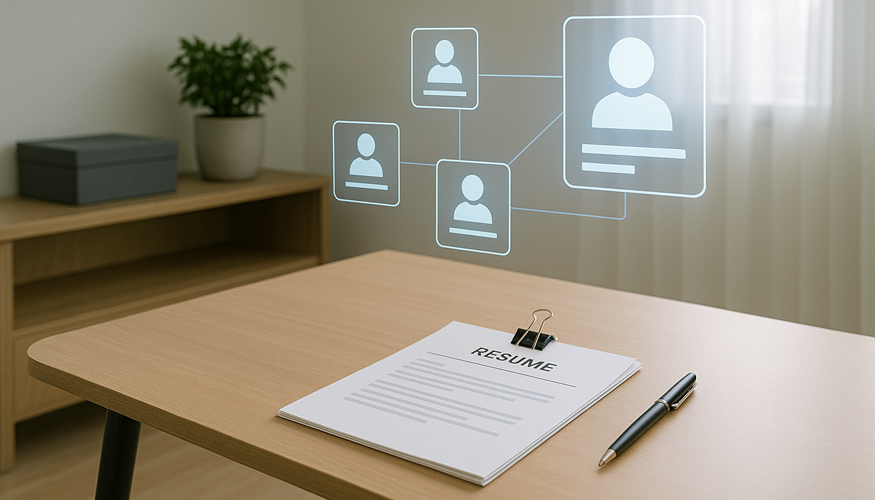Table of Contents
- See how our Voice AI Recruiter↗ works.
- Why pair humans with AI? (Not “AI vs. traditional recruiting”—both)
- The day-to-day: a recruiter’s workflow with an AI recruiter
- Who does what? Clear roles for AI and human collaboration
- Best-practice playbooks (what top teams actually do)
- A practical, 14-day rollout
- What changes for recruiters? (And what doesn’t.)
- Addressing the big questions
- KPIs to watch (and improve)
- Why Whippy for “side-by-side” hiring
- 1) Natural AI voice interviews (not one-way recordings)
- 2) Role-aware logic and workflow automation
- 3) Rich reporting and modern recruitment intelligence
- 4) Built-in governance for fairness and transparency
- 5) Recruiter-controlled, not IT-controlled
- 6) Designed for scale in staffing firms
- 7) Future-proof and evolving
- Ready to work side-by-side with an AI recruiter?
- Request a Free Live Demo↗
Try Whippy for Your Team
Experience how fast, automated communication drives growth.
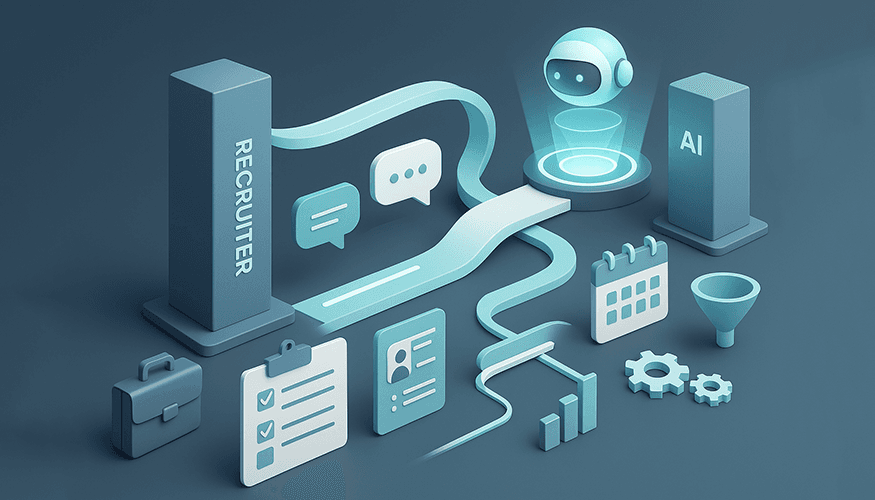
Recruiters work side-by-side with an AI hiring assistant that auto-calls new applicants, runs natural voice interviews, converts conversations into structured insights, and triggers the next steps—while humans lead on judgment, persuasion, and offers. This recruiter + AI collaboration lifts coverage, speed, and quality without adding headcount.
See how our Voice AI Recruiter↗ works.
Why pair humans with AI? (Not “AI vs. traditional recruiting”—both)
Modern staffing teams don’t struggle to find applicants. They struggle to engage them quickly and evaluate them consistently across high volume, multiple branches, and after-hours spikes. That’s where AI changing recruitment matters most. This approach formalizes a scalable recruiter + AI workflow that preserves human judgment while accelerating coverage.
AI agents in recruitment don’t replace recruiters—they reinforce them. When you combine artificial intelligence (AI) with human expertise, staffing firms unlock a practical model:
AI handles scale, structure, and speed.
People handle context, nuance, and trust.
This model closes the biggest gaps in the AI recruitment process:
Volume: automated outreach reaches every applicant—no queues.
Timing: 24/7 coverage↗ captures nights/weekends.
Consistency: repeatable logic improves quality and fairness.
Transparency: transcripts, recordings, and tags enable audits.
AI in recruitment workflow typically includes: automated phone interviews, AI applicant review, AI candidate screening tools, structured data and audit trails, ATS write-back, and rule-based routing—the core of modern AI recruitment technology. Humans focus on relationship-building, persuasion and negotiation, client alignment and storytelling, sensitive edge cases, and final decisions (the “human veto”).
Outcome: AI-powered hiring with higher throughput, an improved candidate experience, fewer missed applicants, stronger fairness, and durable consistency. It’s not AI vs traditional recruiting—it’s AI-assisted recruiting done right.
The day-to-day: a recruiter’s workflow with an AI recruiter
AI isn’t a sidecar tool—it becomes part of your daily operating rhythm, illustrating how recruiters use AI from first contact to decision. Here’s how the AI recruiting assistant workflow plays out in practice.
1) Instant outreach (minutes after apply)
As soon as a candidate submits job applications, the AI hiring software calls within minutes (or at the optimal time based on prior outcomes). No backlog. No waiting for recruiter availability. This creates a coverage engine that standardizes AI interviewing candidates across time zones and shifts—critical for AI for recruitment agencies working nationally or globally.
2) Natural, two-way interviewing
The AI interview software conducts conversational AI recruiting—not phone trees or one-way recordings. It adapts in real time, clarifies unclear answers, supports multilingual AI interview↗ experiences, and listens for signals like availability, tenure, certifications, and intent during AI voice interviews. This feels like a human conversation, not a survey—boosting completion and data quality.
3) Structured results you can use
Each conversation returns a transcript, summary, tags (e.g., “relevant experience,” “no transportation”), and optional AI candidate scoring. You get searchable signal that accelerates decisions, enables semantic search recruitment, and powers AI applicant review without manual note-taking. These signals also inform AI hiring tools like scheduling, routing, and automatic follow-ups.
4) Automated next steps
Based on tags, scores, and rules, the AI recruitment platform can move candidates to the correct stage in your applicant tracking system, send scheduling links, nudge via SMS/email, notify job owners, trigger nurture flows, and pause outreach to avoid duplication. This is full recruitment automation and automated talent acquisition—human-approved, system-executed.
5) Manager oversight & continuous calibration
Managers get modern recruitment intelligence: total/complete/incomplete calls, calls by day/agent/channel, heatmaps, sentiment by day/agent, and score distributions. They tune eligibility rules, question weightings, thresholds, and routing. AI learns; humans remain in control. That’s AI for HR done responsibly in AI staffing software.
Read the deep dive: How the Voice AI Recruiter↗ actually works.
Who does what? Clear roles for AI and human collaboration
AI hiring assistant (autonomous recruitment agents)
- Instant outreach, automated candidate screening, and AI in job applications triage
- Consistent Q&A across roles and locations
- Transcripts, summaries, tags, and eligibility/risk flags
- Initial routing to recruiters or team queues
AI creates structured, unbiased, repeatable processes—the backbone of an AI recruitment platform that scales.
Recruiters
- Prioritization, deeper probes, and client context
- Cultural fit and compensation packaging
- Objection handling and offer strategy
- Relationship-building and final decisions
Recruiter productivity with AI means less repetitive screening, more closing—and better placements.
Regional managers / leads / HR team
- Fairness audits and quality gates
- Score calibration, pipeline mix, and branch consistency
- Reporting to leadership and compliance
They safeguard AI hiring transparency and AI fairness in hiring, actively monitoring AI hiring bias and documenting corrective actions to keep reviews equitable, addressing AI in recruiting bias with visible, auditable processes.
This is a true recruiter + AI partnership, not a replacement.
Best-practice playbooks (what top teams actually do)
The teams that scale AI don’t just ‘turn it on’—they operationalize it. Below is an AI recruiting guide—grounded in live deployments—you can adapt immediately.
1) Calibrate AI scoring quickly—and keep it aligned with “good fit”
AI candidate scoring is only as good as the signals you define. High-performers treat it as a living system:
- Start with objective must-haves (work authorization, shift windows, distance).
- Add weighted factors (tenure, recency, certifications, industry experience, client requirements).
- After the first 50–100 AI voice interviews, compare top-scored candidates with actual recruiter judgment; tighten thresholds.
- Monitor score distributions weekly so the AI assistant for hiring keeps surfacing the right talent.
This ensures AI algorithms reflect your hiring strategy—not just generic patterns. It’s how AI changing recruitment stays aligned with real human standards over the long term.
2) Standardize fairness and build auditability into the workflow
As AI hiring software screens more candidates, fairness and auditability become non-negotiable:
- Use consistent question sets per role to reduce variability.
- Preserve AI hiring transparency with transcripts, recordings, and summaries.
- Track indicators of bias in AI recruiting (e.g., drop-off by time of day or geography).
- Periodically “stress-test” prompts and rules—ethical AI in recruiting isn’t a one-time checkbox.
Outcome: Compliance↗ is easier, and trust grows with candidates, recruiters, and clients.
3) Protect (and enhance) the candidate experience
AI recruiting agents should feel helpful, not robotic:
- Use AI interview automation with natural tone, pacing, and clarifications.
- Offer a simple “Would you like to speak with a recruiter?” escalation.
- Personalize follow-ups using AI summaries—an AI in employer branding win.
When AI powered tools consistently engage candidates and answer questions, you raise conversion without sacrificing empathy.
4) Orchestrate follow-through with automation + human touch
Interviewing is step one. The compounding benefits come from automating repetitive tasks across the funnel:
- Auto-invite/schedule for top scorers.
- Re-engage partial applicants and no-shows via SMS/email.
- Use AI sourcing to reactivate past applicants and refresh availability.
- Sync everything to the applicant tracking system for a unified, searchable record.
This is where data-driven decision-making thrives. Human energy shifts from chasing to closing.
A practical, 14-day rollout
Implementing an AI recruiting platform shouldn’t be disruptive. Here’s a proven path used by AI in staffing firms to go live fast.
Days 0–2: Define your pilot and success criteria
Pick 1–3 roles or regions with high volume or repetitive screening where AI interview automation adds immediate value. Identify must-haves (e.g., work authorization) and nice-to-haves (certifications, tenure), which inform scoring logic and initial training data. This foundation makes the division of labor between AI and humans crystal clear.
Days 3–5: Activate automated workflows
Turn on the staffing AI tool with outreach sequences (e.g., four touches across three days). This activates the AI in recruitment workflow: auto-calling, AI interviewing candidates, summarizing, tagging, and storing transcripts.
Days 6–7: Internal dry runs
Before going live, test like your best recruiter would:
- Validate transcript accuracy and tone
- Confirm tags, summaries, and AI candidate scoring
- Test alerts, ATS write-back, and knockouts
Week 2: Go live with real candidates
The AI hiring solution engages applicants automatically; recruiters work from prioritized, AI-screened queues—not inbox chaos. This is working with an AI recruiter, not working around a tool.
Day 14: Optimize and scale
Adjust weights and eligibility rules. Review fairness and transparency. (Optional) enable auto-invites for high scorers. You’re now ready to scale to more branches or roles. This is how to automate recruiting without disruption.
What changes for recruiters? (And what doesn’t.)
What changes
- Less repetitive screening; more high-value conversations.
- The AI assistant for hiring handles repetitive intake so recruiters enter when the candidate is qualified and engaged.
- Faster speed-to-first-contact and higher coverage.
- AI agents in recruitment reach every applicant within minutes—even after-hours—so you don’t lose top talent to delays.
- Cleaner notes and better collaboration.
- Every AI voice interview generates transcripts, summaries, tags, and structured data—no more copy/paste—so handoffs across recruiters and branches are seamless.
What doesn’t
- Judgment, persuasion, negotiation, and trust remain human.
- Recruiters still own outcomes, manage AI interview quality, and ensure the interview process feels personal.
Bottom line: this is working with AI recruiters, not being replaced by them. The role of recruiter in AI hiring becomes more strategic and more visible inside the business.
Addressing the big questions
Q: Will AI replace recruiters?
A: No. The winners master recruiters + AI collaboration, not all-or-nothing bets. AI handles scale and structure; humans handle nuance. The future of recruiting with AI is partnership. (“Will AI replace recruiters?” is the wrong question; “How do we work side-by-side with an AI recruiter?” is the right one.)
Q: How do we keep it fair?
A: Use standardized question sets, transparent scoring, and periodic review. Monitor AI in recruiting bias, enforce AI fairness in hiring through transcripts, tags, and score audits, and keep humans in the loop. That’s responsible AI for HR.
Q: What skills should recruiters build now?
A: AI skills for recruiters include: writing clear role prompts, reading AI summaries critically, spotting edge cases, tuning rules, and doubling down on human connection (persuasion, storytelling, empathy). AI magnifies great recruiters and exposes weak processes.
Q: What tools matter most?
A: A strong AI recruitment software stack should deliver:
- Natural, multilingual AI interview automation
- Robust AI candidate screening tools (tags, summaries, scoring)
- AI applicant review with ATS write-back
- Transparent audit trails
- Manager-grade analytics
- Recruiter-controlled configuration
KPIs to watch (and improve)
To prove ROI—and earn leadership buy-in—track metrics connecting AI-driven hiring to outcomes:
Coverage & speed
- % of applicants reached in < 24 hours (speed wins first contact)
- Completion rate of AI job interviews
- Qualified rate (scoring accuracy)
Efficiency
- Time saved per recruiter
- Reduction in manual outreach and scheduling
- Less time spent on note-taking
Quality & fairness
- Sentiment trends (by day/agent/channel)
- Score distributions (watch for drift)
- Offer acceptance rate (signal of AI recruitment process quality)
Scalability
- Roles/regions using AI
- Pipeline volume per recruiter
- Consistent performance across branches (AI in staffing firms at work)
These metrics capture maturity, guide optimization, and support data-driven decision-making over the long term.
Why Whippy for “side-by-side” hiring
Most AI recruitment tools were built in theory for HR, not for the realities of high-volume staffing. Whippy is different. It’s designed specifically for working with an AI recruiter in busy, multi-location teams.
Whippy’s AI recruitment platform bakes AI recruiting best practices into the workflow: real conversations (not scripts), role-aware prompts, explainable scoring, multilingual support, and manager-grade transparency. It’s an AI recruiting solution teams actually control—no engineering tickets required.
1) Natural AI voice interviews (not one-way recordings)
Unlike rigid one-way interview platforms, Whippy runs conversational AI recruiting powered by adaptive AI technologies. It listens actively, asks clarifying questions, supports multiple languages, and mirrors human pacing and tone—delivering an improved candidate experience and higher completion.
2) Role-aware logic and workflow automation
Whippy tailors the conversation and evaluation logic using data points like job description requirements, candidate history, availability, certifications, and client-specific rules. That precision makes your hiring strategy faster and more accurate across locations.
3) Rich reporting and modern recruitment intelligence
Real-time dashboards expose calls by day/agent/channel, heatmaps that surface peak engagement windows, sentiment by day/agent, and score distributions—so managers can optimize the interview process, coach effectively, and match resources to demand.
4) Built-in governance for fairness and transparency
With standardized question sets, explainable scoring, transcripts, and auditable decision trails, Whippy makes AI hiring transparency and ethical AI in recruiting practical, not aspirational.
5) Recruiter-controlled, not IT-controlled
Recruiters update questions, adjust eligibility rules, tune AI candidate scoring, and trigger automation directly—no code. That’s how HR teams maintain momentum without waiting on backlogs.
6) Designed for scale in staffing firms
Whippy supports high application volume, multi-region operations, complex scheduling, and after-hours coverage—while keeping the experience personal. From AI applicant review to ATS write-back, it slots into your stack without rip-and-replace.
7) Future-proof and evolving
AI recruiting predictions are clear: the future belongs to teams that leverage AI as a partner. Whippy is already built for AI-powered hiring at scale, with voice + SMS + workflow automation, and it continues to learn from every interview to strengthen outcomes over time, aligning with emerging AI recruiting trends on measurable, auditable performance.
Ready to work side-by-side with an AI recruiter?
If you could interview every applicant, score them consistently, and jump in only when human judgment matters most—how much more could your team accomplish?
With Whippy, AI automates repetitive tasks, accelerates outreach, and converts conversations into structured insights… while recruiters focus on human work in recruiting: persuasion, trust, matching, and closing.
You get:
More interviews, fewer missed candidates
Faster speed-to-hire and better coverage
Stronger data-driven decisions and durable fairness
A scalable, future-proof process that candidates actually like
This is recruiter + AI collaboration done right.
Run more interviews. Miss fewer great candidates. Keep humans where they matter most.
Request a Free Live Demo↗
Table of Contents
Table of Contents
- See how our Voice AI Recruiter↗ works.
- Why pair humans with AI? (Not “AI vs. traditional recruiting”—both)
- The day-to-day: a recruiter’s workflow with an AI recruiter
- Who does what? Clear roles for AI and human collaboration
- Best-practice playbooks (what top teams actually do)
- A practical, 14-day rollout
- What changes for recruiters? (And what doesn’t.)
- Addressing the big questions
- KPIs to watch (and improve)
- Why Whippy for “side-by-side” hiring
- 1) Natural AI voice interviews (not one-way recordings)
- 2) Role-aware logic and workflow automation
- 3) Rich reporting and modern recruitment intelligence
- 4) Built-in governance for fairness and transparency
- 5) Recruiter-controlled, not IT-controlled
- 6) Designed for scale in staffing firms
- 7) Future-proof and evolving
- Ready to work side-by-side with an AI recruiter?
- Request a Free Live Demo↗
Try Whippy for Your Team
Experience how fast, automated communication drives growth.
Related Articles

Best AI Therapist Answering Service
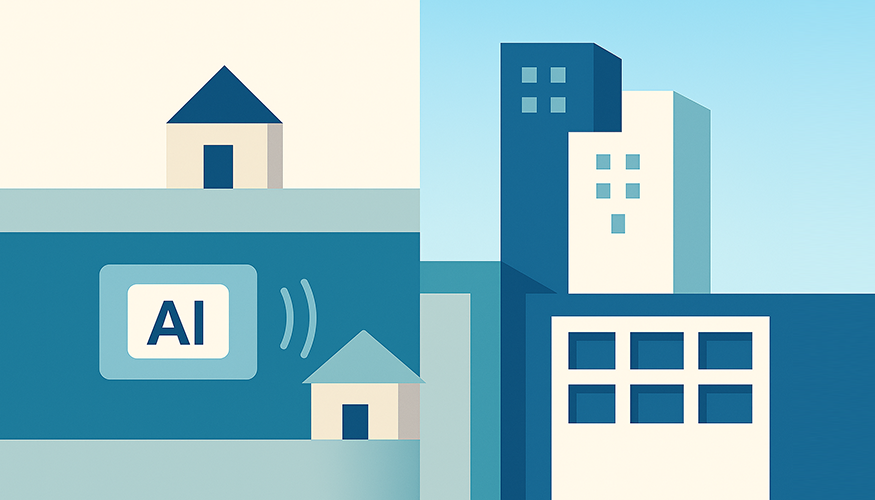
Answering Service for Real Estate Investors – AI 24/7
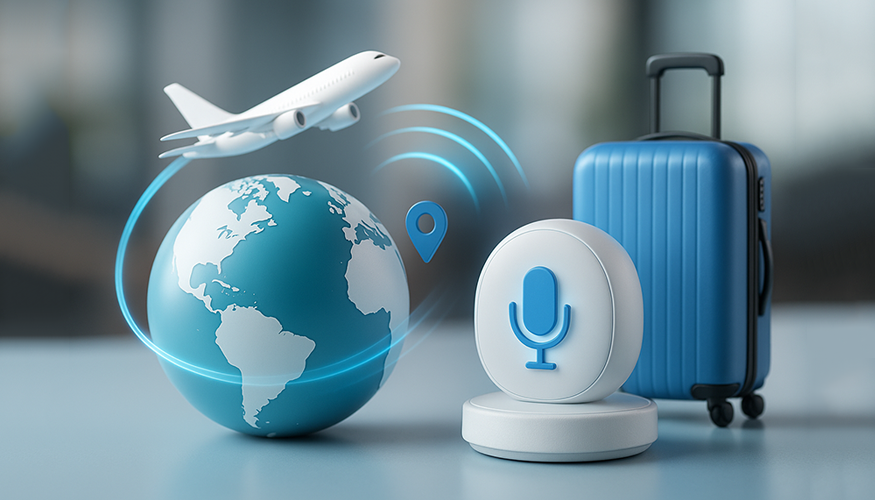
AI Voice Agent for Travel Agencies
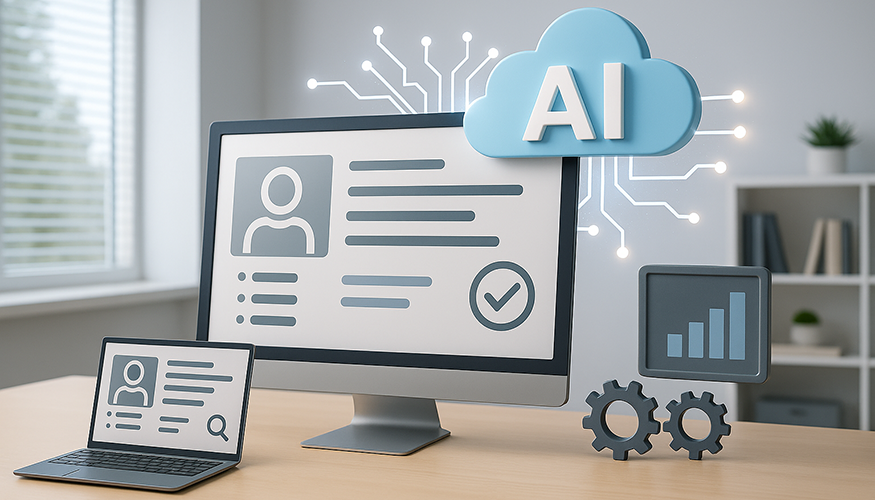
AI Agent for Recruiting: Hire Faster
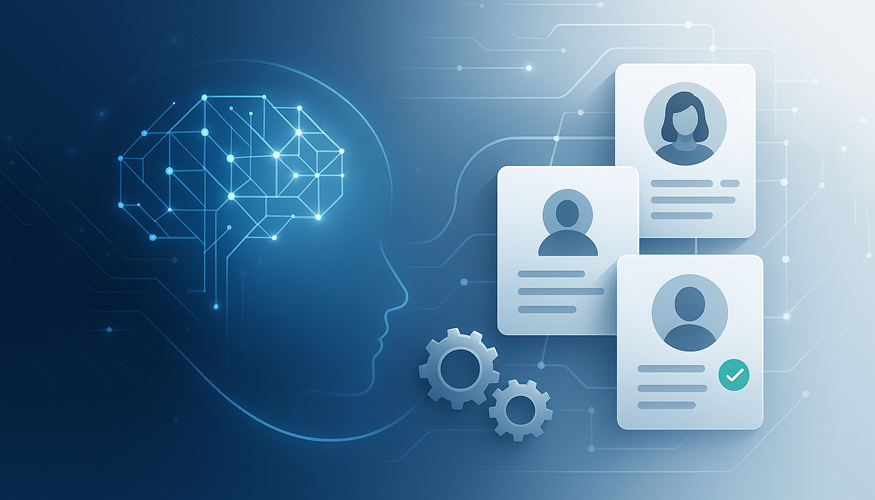
Enterprise Staffing Solutions with AI Automation
